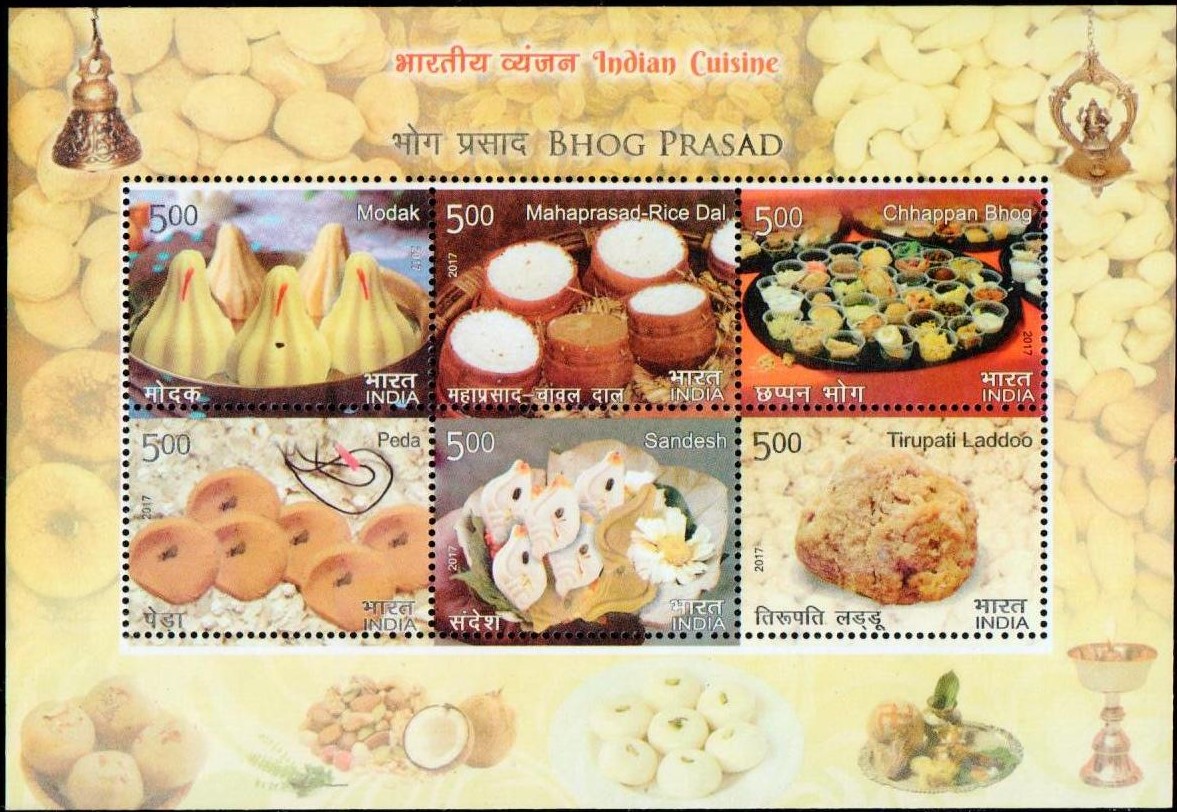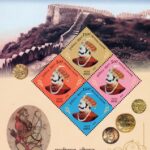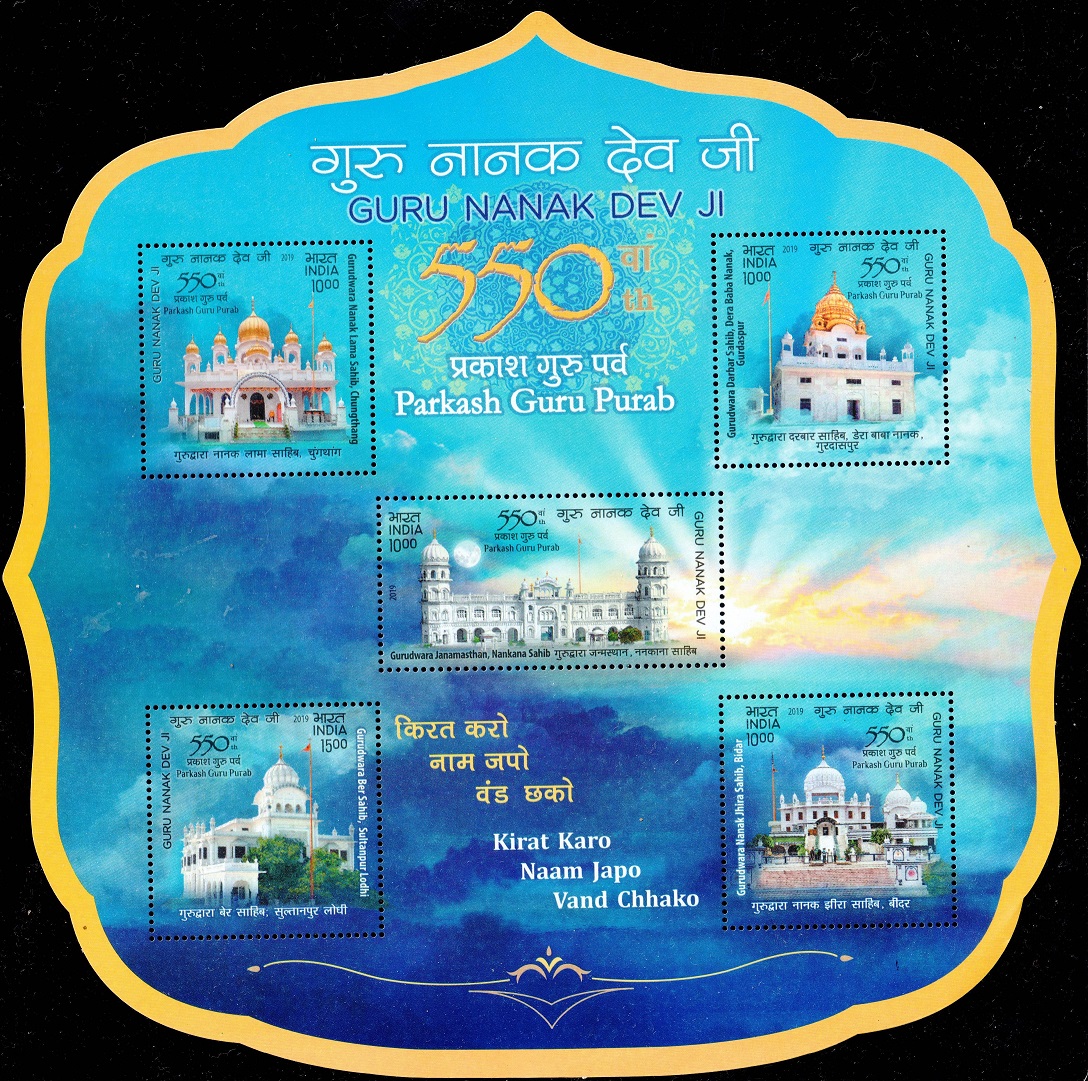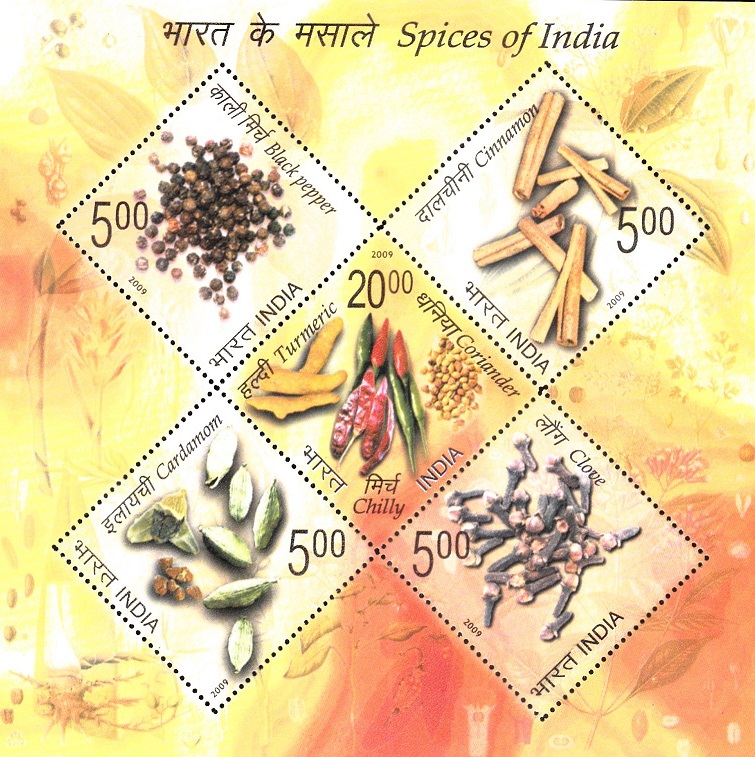
Spices of India 2009
A Miniature Sheet consisting of 5 nos of commemorative postage stamps on the Indian Spices : Black pepper, Cinnamon, Turmeric, Coriander, Chilly, Cardamom and Clove :
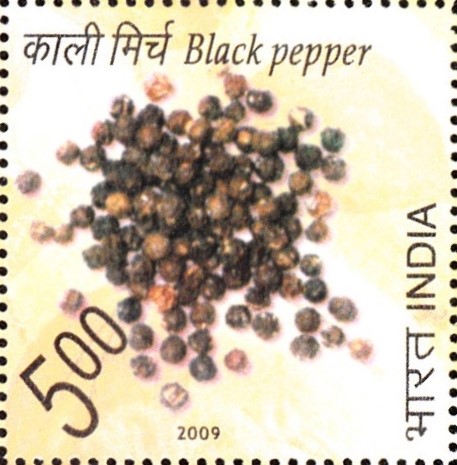
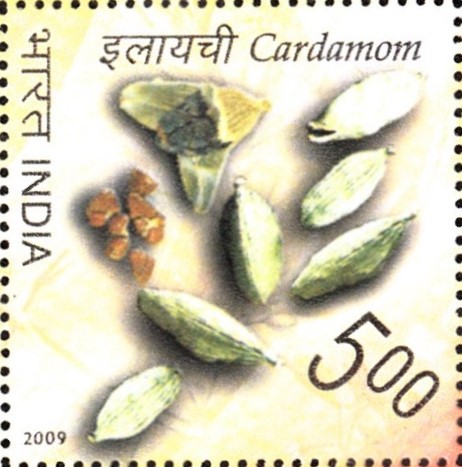
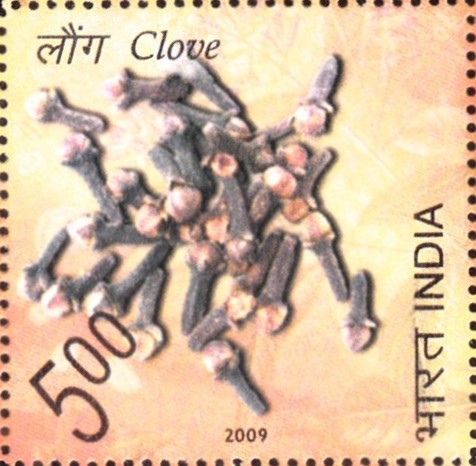
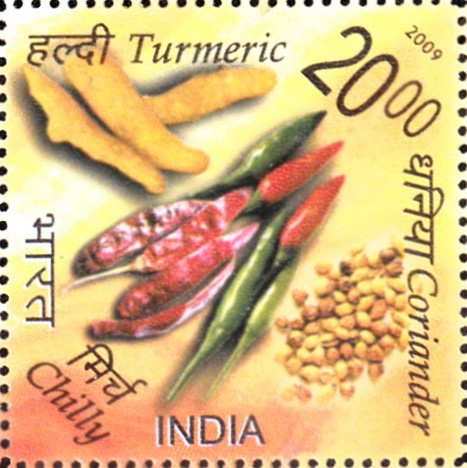
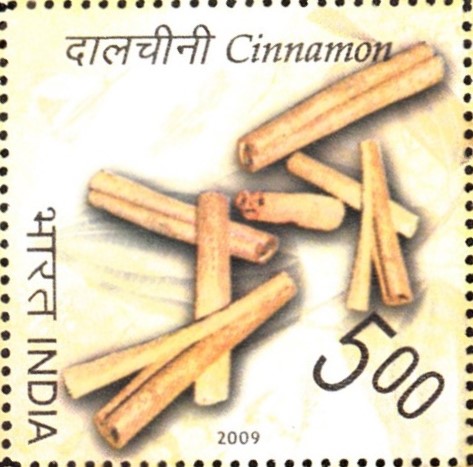
 Issued by India
Issued by India
Issued on Apr 29, 2009
Issued for : India Post is proud to issue a set of five commemorative postage stamps on ‘Spices of India‘.
Credits :
Stamp & FDC : Suresh Kumar
Cancellation : Alka Sharma
Type : Miniature Sheet with above five setenant stamps with thematic border, Mint Condition
Colour : Multi colour
Denomination : 500 Paise each
Stamps Printed : 0.4 Million
Miniature sheet : 0.2 Million
Printing Process : Photogravure
Printer : India Security Press, Nasik
About :
- Home to more than 50 varieties of spices grown in its different agro climatic zones ranging from the tropical to the temperate. India is the spice bowl of the world. The total production of spices is estimated at 2.7 million tons and India exports 0.25 million tons to over 150 destinations of the world, accounting for over 45 percent of the international spice trade both in terms of value and volume.
- The history of spices is doused with concocted stories, romance, bravery, traditions, beliefs, customs, brawls, fights, treachery, pride and prestige. The advents of the navigators and traders during the many centuries with their many flags fluttering helped in discovering land and sea routes for international trade and commerce connecting the east and the west and the south and the north.
- Straight from its use in diplomatic hospitality to becoming rich, the possession of exquisite and exotic spices and hill produces were considered to be glamour, valor and glory in the bygone days. Spices were the main bounty of many of the monarchs and truly, was a token of romance for many Kings and Queens.
- The spices of Indian origin take the unique seat with qualifying features matching the global expectations. Spice as a commodity is a raw material, a natural colour agent, a preservative, a flavour and aroma yielding factor besides a base for lot of formulations. The congenial climatic situations to grow many varieties and the long soil tradition in growing many collections have made this land an incredible origin. On the top of all the varieties that grow have specific traits in terms of compositions and characteristics.
- PEPPER
- Indigenous to India, Pepper is the dried berry of Piper nigrum, a vine which can grow up to ten feet tall. Pepper is actually the berries that are picked about nine months after flowering. Plucked green pepper become black when dried. Removing the outer skin of the green pepper through soaking, makes White Pepper. Green Peppercorns are immature berries, which are freeze dried or packed in brine for preservation. Pepper is a universal table condiment used to flavour all types of dishes in cuisines worldwide. Its oils and oleoresins go in for the manufacture scores of food and non-food products from beverages to pharmaceuticals.
- Interestingly black pepper brought Vasco Da Gama to Calicut in 1848. He wanted to find a sea route to the west coast of India to export black pepper, i.e. black gold, back to Europe.
- CARDAMOM
- Cardamom is the ground seed of a tropical fruit in the ginger family known as Elettaria cardamomum. The seeds are found in oval shaped fruit pods that are between 1/4 and inch long. Cardamom is indigenous to India. It goes in curry and biryani blends in India and is an ingredient for the Arabic coffee of the Middle East and is a flavour yielding material in breads and bakery items in Scandinavian countries. The oil from cardamom exported from India is a favourite ingredient base for many of the international industrial houses.
- CLOVES
- Cloves are the rich, brown, dried, unopened flower buds of Syzygium aromaticum, an evergreen tree in the myrtle family. The name comes from the French Idou meaning nail. Cloves come from Madagascar, Malaysia and Srilanka and India too grows plenty of cloves in the Southern Peninsula. Cloves are used in pharmaceutical products, beverages, cookies, and in Indonesia goes in the manufacture of cigarettes. The clove oil is sought after ingredient for many food and non food industries including hygiene and medical formulations.
- TURMERIC
- Turmeric is the root of Curcuma longa, a leafy plant in the ginger family. The root, or rhizome, has a tough brown skin and bright orange flesh. Ground Turmeric comes from fingers, which extend from the root. It is boiled or steamed and then dried, and ground. India is the world’s primary producer of Turmeric. Turmeric is a necessary ingredient of curry powder. It is used extensively in Indian dishes, including lentil and meat dishes, and in South East Asian cooking. It also is used in place of saffron to provide color and flavour and is often called as the Indian Saffron. Turmeric is mildly aromatic and has scents of orange or ginger. It has a pungent, bitter flavor and has immense therapeutic properties. The extract of turmeric gives curcuma the natural dye for many applications in the food industry.
- CORIANDER
- Coriander is the seed of Coriandrum sativum, a plant in the parsley family. The seed is globular and almost round, brown to yellow red, and 1/5 inch in diameter with alternating straight and wavy ridges. Coriander is grown in India. Coriander is a major ingredient in curry powders and is used in Indian curies, beverages, American cigarettes, and sausages. Its oil is widely used in industrial applications.
- CHILLY
- Chilli is the ground fruit of a plant in the Capsicum family. The spice ranges from orange red, to deep, dark red. Known as Red pepper and Cayenne Pepper, Chillies are grown in plenty in India and there are over 50 varieties distinctly different in colour and pungency. Chillies are the major source of natural colour and pungency, which goes for application in many food and non food industries especially its oil and oleoresins.
- Text : As per the material provided by the proponent.
Subscribe
Login
0 Comments




